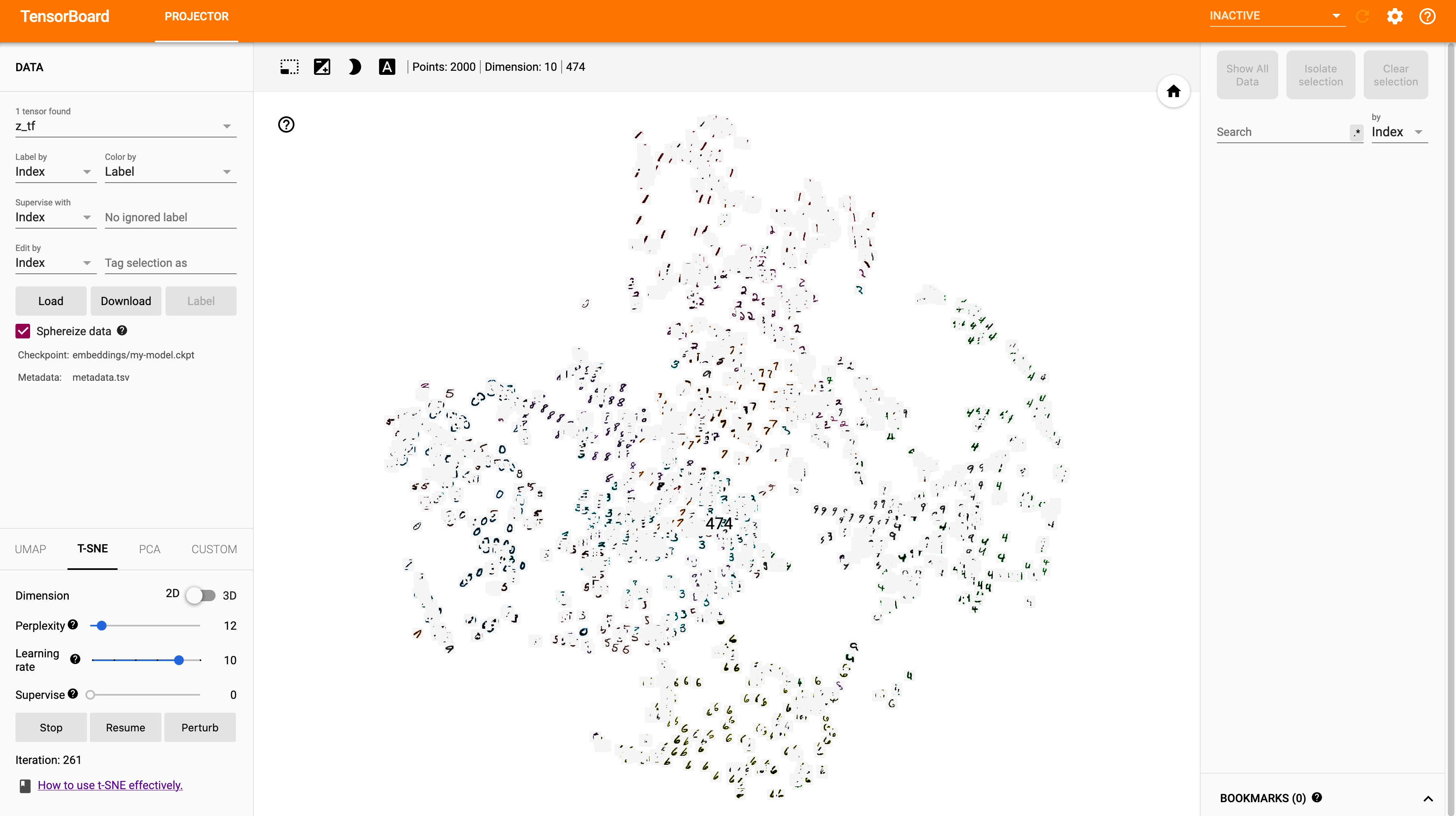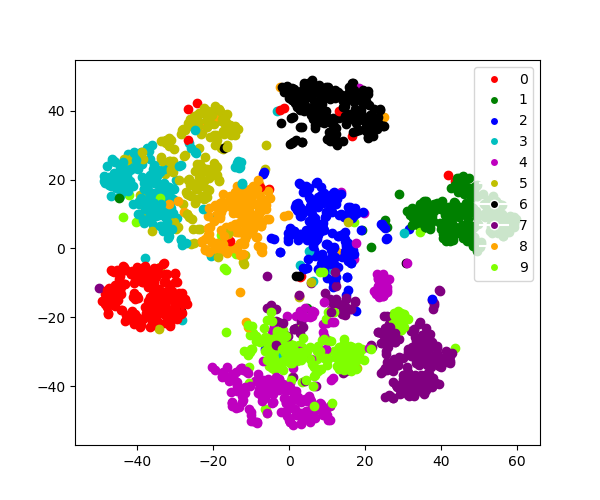This project aims to make using Tensorboard's embedding visualization tool, as well as t-SNE plot using scikit learn, a bit more easily for machine learning projects. I personally found that the documentation, especially for Tensorboard's visualzation tool, and had to spend more time actually figuring out how to use the tools, rather than actually using the tool. I hope this project will enable many people to cut some time on visualizing embeddings.
These are the versions of main libraries that I used for this project. I believe other versions may work, but Tensorflow and Tensorboard versions should at least be 2.x.x.
tensorflow 2.1.0
tensorboard 2.1.1
scikit-learn 0.22.1
matplotlib 3.1.3
Pillow 7.0.0-
Import the class
from EmbeddingHelper import EmbeddingHelper
-
Create an instance of the class
embedding_helper = EmbeddingHelper(encoder=encoder, data_generator=generator, embeddings_dir=embedding_dir)- encoder is a model that when predict is called, outputs tensor shape (batch_size, embedding_dim).
- data_generator is a generator that yields the original data and the corresponding label as a tuple: (x, y).
- embeddings_dir is the directory where all the files related to the embeddings will be logged.
- The instantiating of class may take a while, as it generates the embeddings and metadata during the init.
-
(Optional) Create sprites of the data
- If the data can be made into sprites, you can also call
embedding_helper.create_sprite()to create sprites for Tensorboard.- Additionally, if you need to preprocess the data in a custom way, edit _preproces_data() function in the class.
- If there are no sprites created, the points on Tensorboard will simply be circles.
- If the data can be made into sprites, you can also call
-
Project the embeddings onto Tensorboard
- Call
embedding_helper.to_tensorboard()to project all the data onto Tensorboard. - To view the embeddings, go to the directory one above the specified <embedding_dir>. Then, use the following bash command.
tensorboard --logdir <embedding_dir>- Tip: Use Spherize Data before using t-SNE plot on Tensorboard.
- Additioanlly, you can use Tensorboard to do more than tSNE plots. For example, you can also do PCA visualization.
- Call
-
Create t-SNE plot
- Call
embedding_helper.tsne_plot(labels=label_list, colors=colors, filename='tsne.png', show=False)to create t-SNE plot. - labels takes in list of all the unique labels. Each element should be a string. For example, fo MNIST, it would be ['0', '1', '2', '3', '4', '5', '6', '7', '8', '9'].
- colors takes in list of color to be used for each point's label. The length needs to be same as the length of labels.
- filename is a string that specifies the filename of the plot.
- The plot will be saved to <embedding_dir>/filename
- show set to True will call
plt.show() - The function also takes in exact same arguments as sci-kit learn's tSNE function to allow for customization.
- Call
main.py shows an example on how this library is used. Simply clone the repository, and call
python main.pyThis example use Variational AutoEncoder created for MNIST dataset.
As seen, the points have corresponding sprites as the markers (this can be turned off in Tensorboard).

